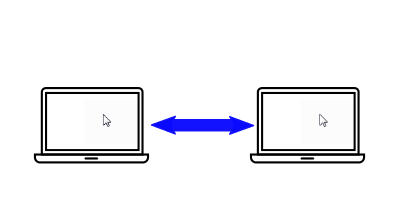

Doctors attempt to synch visualization apps by talking over the phone. Typically a large number of parameters need to be set before clinical data is brought to the screen. The displayed data continually changes and the parameters need to be reset to maintain consistent viewing. This process is very cumbersome and error prone. There is no guarantee that the viewing is synchronized. Doctors forgo this method for all but the simplest cases and end up meeting face-to-face. This is extremely inefficient and time consuming.

These utilities synch remote users by sending changes to screen graphics from one computer to another. They work well for simple tasks like jointly editing a text document. The more graphics changes the more data that is sent between users. They do not work for large, continuous graphics changes especially when coupled with concurrent computations. These are precisely the demands of clinical visualization applications. The use of screen sharing utilities has been attempted and abandoned in numerous clinical situations.

Cloud healthcare companies provide data storage that is commonly accessible to remotely located physicians. This certainly lessens repeat data acquisition as claimed. The big deficiency is that there is no support for dynamic real-time collaboration regardless of where the data is stored. Some companies tout collaboration capabilities through transfer or storage of static images and screen shots. This functionality does not meet the dynamic collaboration needs of clinical visualization.


Blix overcomes the difficulties and deficiencies of the current collaboration methodologies. It provides dynamic, real-time collaboration for visualizing clinical data with bi-directional control. The Blix application runs on both remotely located computers. During a collaboration session the software automatically synchronizes the viewing and actions of the remote located users. This is accomplished by a novel messaging protocol built into the Blix framework. You and your colleague can be certain you are views are synchronized throughout the collaboration session.